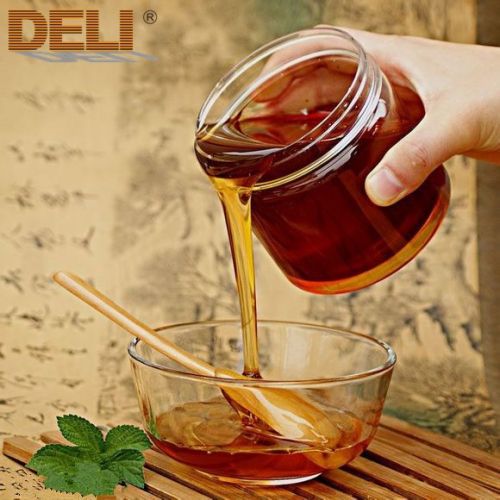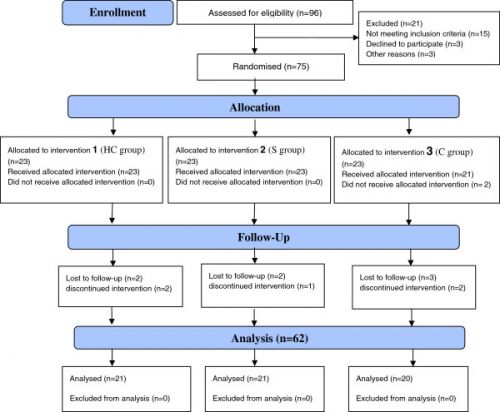1.
Jemal A, Bray F, Center MM, Ferlay J, Ward E, Forman D. Global cancer statistics. CA Cancer J Clin. 2011;61(2):69–90. doi: 10.3322/caac.20107. [PubMed] [Cross Ref]2.
Ferlay J, Shin HR, Bray F, Forman D, Mathers C, Parkin DM. Estimates of worldwide burden of cancer in 2008: GLOBOCAN 2008. Int J Cancer. 2010;127(12):2893–2917. doi: 10.1002/ijc.25516. [PubMed] [Cross Ref]3. Karimi Zarchi AA, Gahangiri M. Pre hypertension and hypertension in Iranian military personnel: prevalence according to some related factors. World Appl Sci J. 2010;11(5):541–547.
4.
Doll R, Peto R. The Causes of Cancer: Quantitative Estimates of Avoidable Risks of Cancer in the United States Today. J Natl Cancer Inst. 1981;66(6):1192–1308. [PubMed]5.
Lind M. Principles of cytotoxic chemotherapy. Medicine. 2011;39(12):711–716. doi: 10.1016/j.mpmed.2011.09.009. [Cross Ref]6. Lalla RV, Brennan M, Schubert M. Oral complications of cancer therapy. In: Yagiela JA, Dowd FJ, Johnson BS, editors. Pharmacology and Therapeutics for Dentistry. 6. St. Louis: Mosby Elsevier; 2011. pp. 782–798.
7.
Hawley P, Hovan A, McGahan C, Saunders D. A randomized placebo-controlled trial of manuka honey for radiation-induced oral mucositis. Support Care Cancer. 2014;22(3):751–761. doi: 10.1007/s00520-013-2031-0. [PubMed] [Cross Ref]8.
Worthington HV, Clarkson JE, Bryan G, Furness S, Glenny A-M, Littlewood A, McCabe MG, Meyer S, Khalid T. Interventions for preventing oral mucositis for patients with cancer receiving treatment. Cochrane Database Syst Rev. 2011;4:5–6. [PubMed]9.
Yarom N, Ariyawardana A, Hovan A, Barasch A, Jarvis V, Jensen SB, Zadik Y, Elad S, Bowen J, Lalla RV. Systematic review of natural agents for the management of oral mucositis in cancer patients. Support Care Cancer. 2013;21(11):3209–3221. doi: 10.1007/s00520-013-1869-5. [PubMed] [Cross Ref]10.
Keefe DM, Schubert MM, Elting LS, Sonis ST, Epstein JB, Raber‒Durlacher JE, Migliorati CA, McGuire DB, Hutchins RD, Peterson DE. Updated clinical practice guidelines for the prevention and treatment of mucositis. Cancer. 2007;109(5):820–831. doi: 10.1002/cncr.22484. [PubMed] [Cross Ref]11.
Bensinger W, Schubert M, Ang K, Brizel D, Brown E, Eilers J, Elting L, Mittal B, Schattner M, Spielberger R. NCCN Task Force Report. prevention and management of mucositis in cancer care. J Natl Compr Canc Netw. 2008;6:S1. [PubMed]12.
Clarkson JE, Worthington HV, Furness S, McCabe M, Khalid T, Meyer S. Interventions for treating oral mucositis for patients with cancer receiving treatment. Cochrane Database Syst Rev. 2010;8:12–14. [PubMed]13.
Peterson D, Bensadoun R-J, Roila F. Management of oral and gastrointestinal mucositis: ESMO Clinical Practice Guidelines. Ann Oncol. 2011;22(suppl 6):vi78–vi84. [PMC free article] [PubMed]15.
Jull AB, Walker N, Deshpande S. Honey as a topical treatment for wounds. Cochrane Database Syst Rev. 2013;2:2. [PubMed]16.
Shadkam MN, Mozaffari-Khosravi H, Mozayan MR. A comparison of the effect of honey, dextromethorphan, and diphenhydramine on nightly cough and sleep quality in children and their parents. J Altern Complement Med. 2010;16(7):787–793. doi: 10.1089/acm.2009.0311. [PubMed] [Cross Ref]17.
Paul IM, Beiler J, McMonagle A, Shaffer ML, Duda L, Berlin CM., Jr Effect of honey, dextromethorphan, and no treatment on nocturnal cough and sleep quality for coughing children and their parents. Arch Pediatr Adolesc Med. 2007;161(12):1140. doi: 10.1001/archpedi.161.12.1140. [PubMed] [Cross Ref]18.
Pfeiffer WF. A multicultural approach to the patient who has a common cold. Pediatr Rev. 2005;26(5):170–175. doi: 10.1542/pir.26-5-170. [PubMed] [Cross Ref]19. Haq F, Ahmad H, Alam M. Traditional uses of medicinal plants of Nandiar Khuwarr catchment (District Battagram) Pakistan. J Med Plant Res. 2011;5:39–48.
20.
Al-Waili NS. Topical application of natural honey, beeswax and olive oil mixture for atopic dermatitis or psoriasis: partially controlled, single-blinded study. Complement Ther Med. 2003;11(4):226–234. doi: 10.1016/S0965-2299(03)00120-1. [PubMed] [Cross Ref]21.
Tushar T, Vinod T, Rajan S, Shashindran C, Adithan C. Effect of honey on CYP3A4, CYP2D6 and CYP2C19 enzyme activity in healthy human volunteers. Basic Clin Pharmacol Toxicol. 2007;100(4):269–272. doi: 10.1111/j.1742-7843.2006.00039.x. [PubMed] [Cross Ref]22. Yao LK, Razak SLA, Ismail N, Fai NC, Asgar M, Sharif N, Aan G, Jubri Z. Malaysian gelam honey reduces oxidative damage and modulates antioxidant enzyme activities in young and middle aged rats. J Med Plant Res. 2011;5(23):5618–5625.
23.
Khanal B, Baliga M, Uppal N. Effect of topical honey on limitation of radiation-induced oral mucositis: an intervention study. Int J Oral Maxillofac Surg. 2010;39(12):1181–1185. doi: 10.1016/j.ijom.2010.05.014. [PubMed] [Cross Ref]24.
Zaid SS, Sulaiman SA, Sirajudeen KN, Othman NH. The effects of Tualang honey on female reproductive organs, tibia bone and hormonal profile in ovariectomised rats-animal model for menopause. BMC Complement Altern Med. 2010;10(1):82. doi: 10.1186/1472-6882-10-82. [PMC free article] [PubMed] [Cross Ref]25. Makpol S, Ahmad T, Jubri Z, Rejab N, Yusof N, Yusof YAM. Gelam honey acting as a radioprotectant agent in gamma-irradiated human diploid fibroblasts. J Med Plant Res. 2012;6:129–138.
26.
Sezer M, Sahin O, Solak O, Fidan F, Kara Z, Unlu M. Effects of Caffeic Acid Phenethyl Ester on the Histopathological Changes in the Lungs of Cigarette Smoke‒Exposed Rabbits. Basic Clin Pharmacol Toxicol. 2007;101(3):187–191. doi: 10.1111/j.1742-7843.2007.00111.x. [PubMed] [Cross Ref]27.
Tan H, Rahman R, Gan S, Halim A, Hassan S, Sulaiman S, Kirnpal-Kaur B. The antibacterial properties of Malaysian tualang honey against wound and enteric microorganisms in comparison to manuka honey. BMC Complement Altern Med. 2009;9(1):34. doi: 10.1186/1472-6882-9-34. [PMC free article] [PubMed] [Cross Ref]28.
Basson NJ, Grobler SR. Antimicrobial activity of two South African honeys produced from indigenous Leucospermum cordifolium and Erica species on selected micro-organisms. BMC Complement Altern Med. 2008;8(1):41. doi: 10.1186/1472-6882-8-41. [PMC free article] [PubMed] [Cross Ref]29.
Al-Waili N. An alternative treatment for pityriasis versicolor, tinea cruris, tinea corporis and tinea faciei with topical application of honey, olive oil and beeswax mixture: an open pilot study. Complement Ther Med. 2004;12(1):45–47. doi: 10.1016/j.ctim.2004.01.002. [PubMed] [Cross Ref]30.
Bogdanov S, Jurendic T, Sieber R, Gallmann P. Honey for nutrition and health: a review. J Am Coll Nutr. 2008;27(6):677–689. doi: 10.1080/07315724.2008.10719745. [PubMed] [Cross Ref]31. Al Ameen NM, Altubaigy F, Jahangir T, Mahday IA, Mohammed EA, Musa OA. Effect of Nigella sativa and bee honey on pulmonary, hepatic and renal function in Sudanese in Khartoum state. J Med Plant Res. 2011;5:6857–6863.
32.
Nilforoushzadeh MA, Jaffary F, Moradi S, Derakhshan R, Haftbaradaran E. Effect of topical honey application along with intralesional injection of glucantime in the treatment of cutaneous leishmaniasis. BMC Complement Altern Med. 2007;7(1):13. doi: 10.1186/1472-6882-7-13. [PMC free article] [PubMed] [Cross Ref]33.
Khoo Y-T, Halim A, Singh K-K, Mohamad N-A. Wound contraction effects and antibacterial properties of Tualang honey on full-thickness burn wounds in rats in comparison to hydrofibre. BMC Complement Altern Med. 2010;10(1):48. doi: 10.1186/1472-6882-10-48. [PMC free article] [PubMed] [Cross Ref]34.
Molan PC. Potential of honey in the treatment of wounds and burns. Am J Clin Dermatol. 2001;2(1):13–19. doi: 10.2165/00128071-200102010-00003. [PubMed] [Cross Ref]35.
Sherlock O, Dolan A, Athman R, Power A, Gethin G, Cowman S, Humphreys H. Comparison of the antimicrobial activity of Ulmo honey from Chile and Manuka honey against methicillin-resistant Staphylococcus aureus, Escherichia coli and Pseudomonas aeruginosa. BMC Complement Altern Med. 2010;10(1):47. doi: 10.1186/1472-6882-10-47. [PMC free article] [PubMed] [Cross Ref]36.
Nasir N-AM, Halim AS, Singh K-KB, Dorai AA, Haneef M-NM. Antibacterial properties of tualang honey and its effect in burn wound management: a comparative study. BMC Complement Altern Med. 2010;10(1):31. doi: 10.1186/1472-6882-10-31. [PMC free article] [PubMed] [Cross Ref]37.
Pipicelli G, Tatti P. Therapeutic properties of honey. Health. 2009;1(2):281–283. doi: 10.4236/health.2009.14045. [Cross Ref]38.
English H, Pack A, Molan P. The effects of manuka honey on plaque and gingivitis: a pilot study. J Int Acad Periodontol. 2004;6(2):63–67. [PubMed]39.
Eccles R. Mechanisms of the placebo effect of sweet cough syrups. Respir Physiol Neurobiol. 2006;152(3):340–348. doi: 10.1016/j.resp.2005.10.004. [PubMed] [Cross Ref]40.
Song JJ, Twumasi-Ankrah P, Salcido R. Systematic review and meta-analysis on the use of honey to protect from the effects of radiation-induced oral mucositis. Adv Skin Wound Care. 2012;25(1):23–28. doi: 10.1097/01.ASW.0000410687.14363.a3. [PubMed] [Cross Ref]41.
Rashad U, Al-Gezawy S, El-Gezawy E, Azzaz A. Honey as topical prophylaxis against radiochemotherapy-induced mucositis in head and neck cancer. J Laryngol Otol. 2009;123(02):223–228. doi: 10.1017/S0022215108002478. [PubMed] [Cross Ref]42.
Motallebnejad M, Akram S, Moghadamnia A, Moulana Z, Omidi S. The effect of topical application of pure honey on radiation-induced mucositis: a randomized clinical trial. J Contemp Dent Pract. 2008;9(3):40–47. [PubMed]43.
Welsh EJ, Bara A, Barley E, Cates CJ. Caffeine for asthma. Cochrane Database Syst Rev. 2010;1:2–3. [PubMed]44.
Henderson-Smart DJ, Steer PA. Caffeine versus theophylline for apnea in preterm infants. Cochrane Database Syst Rev. 2010;1:4–5. [PubMed]45.
Pereira P, De Oliveira PA, Ardenghi P, Rotta L, Henriques JAP, Picada JN. Neuropharmacological analysis of caffeic acid in rats. Basic Clin Pharmacol Toxicol. 2006;99(5):374–378. doi: 10.1111/j.1742-7843.2006.pto_533.x. [PubMed] [Cross Ref]46.
Davis JK, Green JM. Caffeine and anaerobic performance. Sports Med. 2009;39(10):813–832. doi: 10.2165/11317770-000000000-00000. [PubMed] [Cross Ref]47.
Furtado KS, Prado MG, Silva MA e, Dias MC, Rivelli DP, Rodrigues MA, Barbisan LF. Coffee and caffeine protect against liver injury induced by thioacetamide in male Wistar rats. Basic Clin Pharmacol Toxicol. 2012;111(5):339–347. [PubMed]48.
Lecoultre V, Carrel G, Egli L, Binnert C, Boss A, MacMillan EL, Kreis R, Boesch C, Darimont C, Tappy L. Coffee consumption attenuates short-term fructose-induced liver insulin resistance in healthy men. Am J Clin Nutr. 2014;99(2):069526. doi: 10.3945/ajcn.113.069526. [PubMed] [Cross Ref]49. Raeessi MA, Aslani J, Gharaie H, Karimi Zarchi AA, Raeessi N, Assari S. Honey with Coffee: a new finding in the treatment of Persistent Postinfectious Cough. Iran J Otorhinolaryngol. 2011;23(2):1–8.
50.
Raeessi MA, Aslani J, Raeessi N, Gharaie H, Karimi Zarchi AA, Raeessi F. Honey plus coffee versus systemic steroid in the treatment of persistent post-infectious cough: a randomised controlled trial. Prim Care Respir J. 2013;22(3):325–330. doi: 10.4104/pcrj.2013.00072. [PubMed] [Cross Ref]51. Raeessi MA, Aslani J, Raeessi N, Gharaie H, Karimi Zarchi AA, Raeessi F, Ahmadi SM. “Persistent post-infectious cough” is better treated by which one? Prednisolone, Honey, Coffee, or Honey plus coffee: a meta-analysis. Indian J Traditional Knowledge. 2014;13(3):453–460.
52. Hsiao G, Sonis S. Oral Mucositis, mucositis assessment scales. In: Max MB, Lynn J, editors. Interactive Textbook on Clinical Symptom Research. Bethesda: National Institutes of Health; 2003.
53.
Ghashm AA, Othman NH, Khattak MN, Ismail NM, Saini R. Antiproliferative effect of Tualang honey on oral squamous cell carcinoma and osteosarcoma cell lines. BMC Complement Altern Med. 2010;10(1):49. [PMC free article] [PubMed]54.
Abdulrhman M, Samir Elbarbary N, Ahmed Amin D, Saeid Ebrahim R. Honey and a mixture of honey, beeswax, and olive oil-propolis extract in treatment of chemotherapy-induced oral mucositis: a randomized controlled pilot study. Pediatr Hematol Oncol. 2012;29(3):285–292. doi: 10.3109/08880018.2012.669026. [PubMed] [Cross Ref]55.
Moore OA, Smith LA, Campbell F, Seers K, McQuay HJ, Moore RA. Systematic review of the use of honey as a wound dressing. BMC Complement Altern Med. 2001;1(1):2. doi: 10.1186/1472-6882-1-2. [PMC free article] [PubMed] [Cross Ref]






Plaats een reactie ...
Reageer op "Honing plus koffie vermindert het beste mucositus - slijmvliesontstekingen in de mond veroorzaakt door chemo in vergelijking met steroïden"